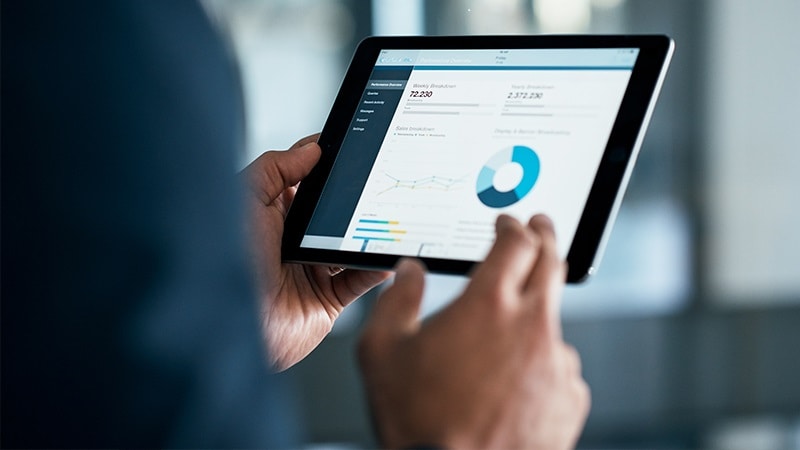Step-by-step: How to make a balance sheet
Explore how a well-organized balance sheet can help your business avoid accounting errors, uncover new cash flow opportunities and achieve greater financial success. Presented by Chase for Business.

Businesses use balance sheets to make important financial decisions. One way to gain a better understanding of your business’s finances, is to organize them in a way that lets you quickly scan all of your business assets, liabilities and equity.
Why are balance sheets important?
Balance sheets help accountants, investors, creditors and business owners determine the overall financial health of a business. These reports provide a quick snapshot of a business’s finances — typically at quarter-end or year-end. Balance sheets are often used as a guide before making financial decisions for the future.
How to make a balance sheet
While it may seem intimidating at first, creating a balance sheet is actually a simple task once you understand what you need to do. You can create it using software programs like Excel or by investing in accounting software. Whether you’re a business owner or an accountant, you can follow these steps to make a basic balance sheet:
1. Invest in accounting software
If you want a program that has built-in functionality to help you enter data and make calculations more efficiently, consider investing in an accounting software program. There are a wide range of software programs that cater to users from beginner to advanced, so you can choose one that works for your current skill level. If you don’t already have a basic understanding of accounting, you may want to invest in an advanced software program that does most of the work for you.
2. Create a heading
The first step is to create a header for your document. The typical naming convention includes the words “Balance Sheet” with your company name and the date for the end of the fiscal year or quarter underneath.
Clearly marking this information makes it easier for you and any stakeholders to find the balance sheet when you need it and compare it to other financial documents or to balance sheets from other years or quarters.
3. Use the basic accounting equation to separate each section
Assets = Liabilities + Owner’s Equity. This is the basic equation that determines whether your balance sheet is actually ”balanced” after you record all of your assets, liabilities and equity. If the sum of the figures on both sides of the equal sign are the same, your sheet is balanced.
There are generally five parts to a basic balance sheet: individual assets, total assets, liabilities, owner’s equity, total of liabilities and owner’s liability. As long as you have all five of these in your balance sheet, you can order them in the way that makes the most sense to you. But remember, it’s important to structure your balance sheet so you don't leave out any relevant information.
Here’s one common example of how to structure your balance sheet:
- Assets section in the top left corner
- Liabilities section in the top right corner
- Owner's equity section below liabilities
- Total assets category at the bottom of the balance sheet
- Combined total liabilities and owner's equity category under total assets
4. Include all of your assets
You can first list your current assets (cash, marketable securities or inventory), ordering the ones your company can quickly turn into cash before the others.
Then, under a separate subheading, you can list your non-current assets (property, equipment and nonmarket securities and investments) and intellectual properties. Include your intellectual assets like trademarks, patents or copyrights under your noncurrent category, or you can label them under "intangible assets."
Once you list all your assets and their value, you can calculate your total assets by adding your current assets, noncurrent assets and intellectual properties. For noncurrent assets in particular, you should be prepared to explain how you determined their fair value.
Lastly, you can compare your total to the one listed on your company’s general ledger to ensure there are no discrepancies. If there are, double check your figures.
Total Assets = Current Assets + Noncurrent Assets + Intellectual Property.
5. Create a section for liabilities
Your liabilities section lists all of your current and noncurrent liabilities. Once you list and assign the values for each, you can add them together to get your total liabilities. Example liabilities include short and long-term debt and accounts payable.
Total Liabilities = Current Liabilities + Noncurrent Liabilities
6. Create a section for owner’s equity
Your owner’s equity section includes your retained earnings-the assets you have left after liabilities and paying distributions to your shareholders or owners. Add the sum of each to get the total amount of owner's equity, or use the following equation:
Owner’s Equity = Total Assets − Total Liabilities
7. Add total liabilities to total owner’s equity
Once you have your total owner’s equity, you can add it to your total liabilities. Your total liabilities (including debt or accounts payable) and your total equity (remaining value) should equal your total assets.
If they do not equal, this means you need to check your calculations.
This is an example template to help you format your balance sheet:
Balance Sheet {Business Name} |
December 31, 2020 |
Assets: |
Liabilities: |
|
|
|
|
|
Owner’s Equity: |
|
|
|
|
Total Assets: |
Total Liabilities & Owner’s Equity |
|
|
Total Assets = Total Liabilities + Owner’s Equity |
|
By putting these steps into practice, it will help you avoid accounting errors, identify new cash flow opportunities and promote financial success within your company. Managing your business checking accounts can make creating a balance sheet much easier. Speak with a business banker to see what other options are available for you.



